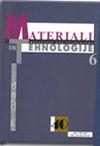由merocyanine分子介导的葡萄糖溶液中葡萄糖浓度的光刺激降低
IF 0.8
4区 材料科学
Q4 MATERIALS SCIENCE, MULTIDISCIPLINARY
引用次数: 0
摘要
糖尿病是一种以血糖水平升高为特征的慢性代谢性疾病,已成为全球性的挑战。目前,糖尿病的广泛和常规治疗涉及到胰岛素的使用。然而,胰岛素不再被认为是治疗2型糖尿病的首选药物,越来越多的非胰岛素类药物正在出现,它们有望成为调节血糖水平的替代方案。在这方面,通过外部刺激(如光)控制血液中的葡萄糖水平,为在适当的时间以所需的剂量控制血糖浓度提供了一条新的途径。在这里,我们报道了一种基于螺吡喃-merocyanine光异构的光刺激降糖方法。我们发现,在紫光(405 nm)照射下,液晶微球内螺旋吡喃分子的封闭异构体转化为开放的merocyanine异构体,这反过来刺激merocyanine通过液晶/葡萄糖乳液的界面转运。Merocyanine很容易与葡萄糖分子相互作用,使乳剂的总葡萄糖浓度降低20%。本文章由计算机程序翻译,如有差异,请以英文原文为准。
LIGHT-STIMULATED LOWERING OF GLUCOSE CONCENTRATION IN A DEXTROSE SOLUTION MEDIATED BY MEROCYANINE MOLECULES
Diabetes mellitus is a chronic metabolic disease characterized by elevated blood glucose levels and has become a global challenge. Currently, the widespread and regular treatment of diabetes mellitus involves the administration of insulin. However, insulin is no longer considered the first choice for type 2 diabetes, and an expanding range of new treatment modalities are emerging as noninsulin-based medications that are promising alternatives to regulate blood glucose levels. In this regard, controlling the glucose level in blood by external stimuli, such as light, offers a new route to governing the blood glucose concentration with the required dose and at the appropriate time. Here, we report on a light-stimulated glucose-lowering method based on spiropyran-merocyanine photoisomerization. We show that upon exposure to violet light (405 nm), the closed isoform of spiropyran molecules inside liquid crystal microspheres transforms into the open merocyanine isoform, which in turn stimulates merocyanine to translocate through the interface of the liquid crystal/dextrose emulsion. Merocyanine readily interacts with glucose molecules and causes a lowering of the emulsion’s total glucose concentration by 20 %.
求助全文
通过发布文献求助,成功后即可免费获取论文全文。
去求助
来源期刊

Materiali in tehnologije
工程技术-材料科学:综合
CiteScore
1.30
自引率
0.00%
发文量
73
审稿时长
4-8 weeks
期刊介绍:
The journal MATERIALI IN TEHNOLOGIJE/MATERIALS AND TECHNOLOGY is a scientific journal, devoted to original papers and review scientific papers concerned with the areas of fundamental and applied science and technology. Topics of particular interest include metallic materials, inorganic materials, polymers, vacuum technique and lately nanomaterials.
 求助内容:
求助内容: 应助结果提醒方式:
应助结果提醒方式:


